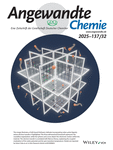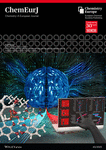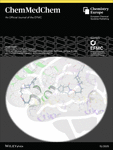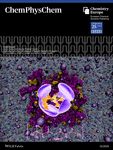Journal list menu
For full article and contact information, see Angew. Chem. Int. Ed. 1998, 37 (24), 3359 - 3363
Molybdenum Fullerenes
A giant molecule made up of 132 molybdenum atoms
is reminiscent of a monster 'buckyball'
The Bielefeld chemist Achim Müller's research group attracted much attention in 1995 when they were able to make a giant molecular wheel from 154 molybdenum atoms. Their latest breakthrough is also made from molybdenum metal - this time in the form of a sphere of 132 atoms. But the spherical outer surface of the molecule hides an inner geometrical secret: an arrangement of 60 molybdenum atoms which closely resembles the structure of the known compound C60-fullerene, also known as the 'buckyball' or 'carbon football'. The researchers have called their molecule a 'Keplerate' following the ideas of the famous astronomer Kepler, who once described the orbits of the planets in terms of spherical paths.
The outer surface of the new 'superball' also looks suspiciously like that of a simple virus. "Nature really seems to be applying a general building principle in this case," Müller says - although the difference between the Bielefeld chemists' inorganic building blocks and the protein elements of viruses could hardly be greater.
Possibly Achim Müller and his co-workers were able to make the new molecule by mixing together molybdenum-containing components shaped like octahedra, but with five edges round the middle rather than four. The technical term for this arrangement is a 'pentagonal bipyramid.' Previously they had used only tetrahedra and octahedra, but the number five turns out to be very significant for the construction of spherical structures. For instance, the C60 molecule only has its football shape because its atomic frame consists of rings of five carbon atoms.
Once the building blocks were there, the 'super-fullerene' virtually made itself - when the reaction conditions were right. "It is very important to restrict the growth of the molecules at the right time," Müller says. The chemists chose their molybdenum starting materials with this in mind: the final entities have oxygen atoms sticking out of their surfaces like spikes, which prevent larger aggregates from being formed. So what can be done with the monster fullerene? "Our sphere is hollow inside," comments Müller. "We might be able to cut a piece off one side to leave a molecule resembling a large shopping basket." Such a structure, for example, could be used to collect up smaller molecules.






































